StemUp: AQA A level Biology 3.7.1 Inheritance
1/31
There's no tags or description
Looks like no tags are added yet.
Name | Mastery | Learn | Test | Matching | Spaced |
|---|
No study sessions yet.
32 Terms
What is meant by the term 'genotype'? (1)
The genetic constitution of an organism e.g. Bb
What is meant by the term 'phenotype'? (1)
The expression of a genetic constitution and its interaction with the environment e.g. blue eyes
What is meant by 'alleles'? (1)
Different versions of the same gene
What are the different types of alleles? (3)
- Dominant
- Recessive
- Co-dominant
What are dominant alleles? (2)
- The allele that is always expressed in a phenotype when present in the genotype
- Always denoted in capital letters
What are recessive alleles? (2)
- The allele is only expressed when the genotype is homozygous recessive
- Always denoted in lowercase
What is co-dominance? (2)
- Where both alleles are expressed in the phenotype (i.e. they are both dominant)
- E.g. pink flowers are expressed by a C_W C_R genotype
In a diploid organism, what are the possible states of the alleles at a specific locus?
- Homozygous
- Heterozygous
What is a homozygous genotype? (2)
- Where both alleles in the genotype are the same
- E.g. BB (homozygous dominant) or bb (homozygous recessive)
What is a heterozygous genotype? (2)
- Where both alleles in the genotype are different to each other
- E.g. Bb
What are the two sex chromosomes? (2)
- X
- Y
What is the sex chromosome genotype of all females? (1)
XX
What is the sex chromosome genotype of all males? (1)
XY
Describe what is meant by 'sex-linked' genes (2)
- Where the gene is carried on only one type of sex chromosome
- Usually the X chromosome
What is a common example of sex-linked genes? (1)
- Colour blindness
- Which is caused by a recessive allele that is carried on the X chromosome
Why are sex linked conditions more common in males than females? (3)
- Males only contain one X chromosomes
- Females contain two X chromosomes
- X-linked disorders are always expressed in males (as they only have one X-chromosome)
Describe what is meant by 'multiple alleles' (3)
- Where there are more than two alleles of a particular gene
- However, only two alleles can be present in a genotype
- E.g. There are 3 different alleles for the blood group gene (I^A , I^B and I^O)
Mendel studied the inheritance of height in pea plants. He crossed pure breeding (homozygous) tall and dwarf plants.
Show this result on a genetic diagram with the F1 ratio
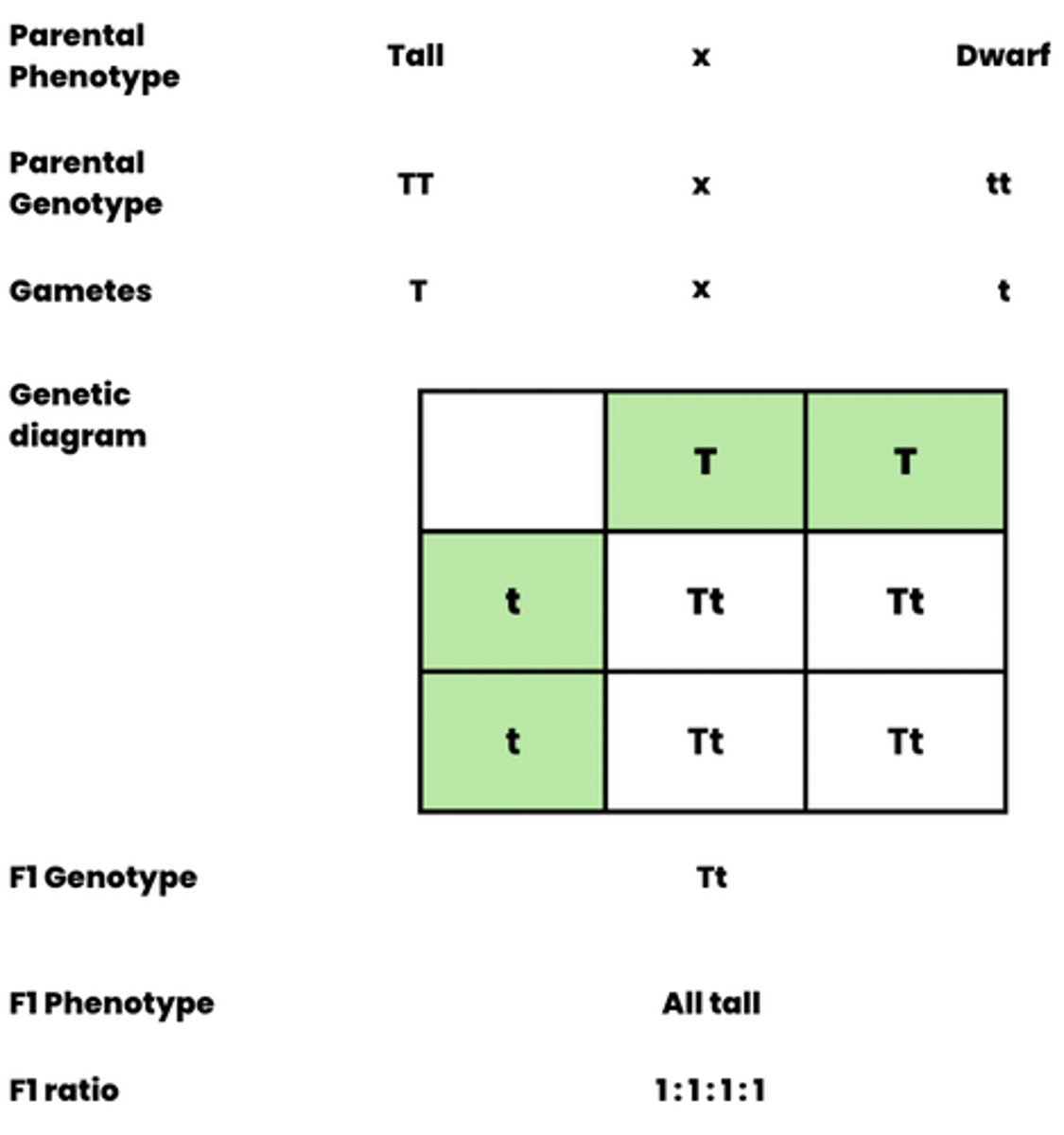
Assail is a florist with a beautiful botanical garden. He decides to cross two pink flower plants.
Show this in a genetic diagram with the F1 ratios
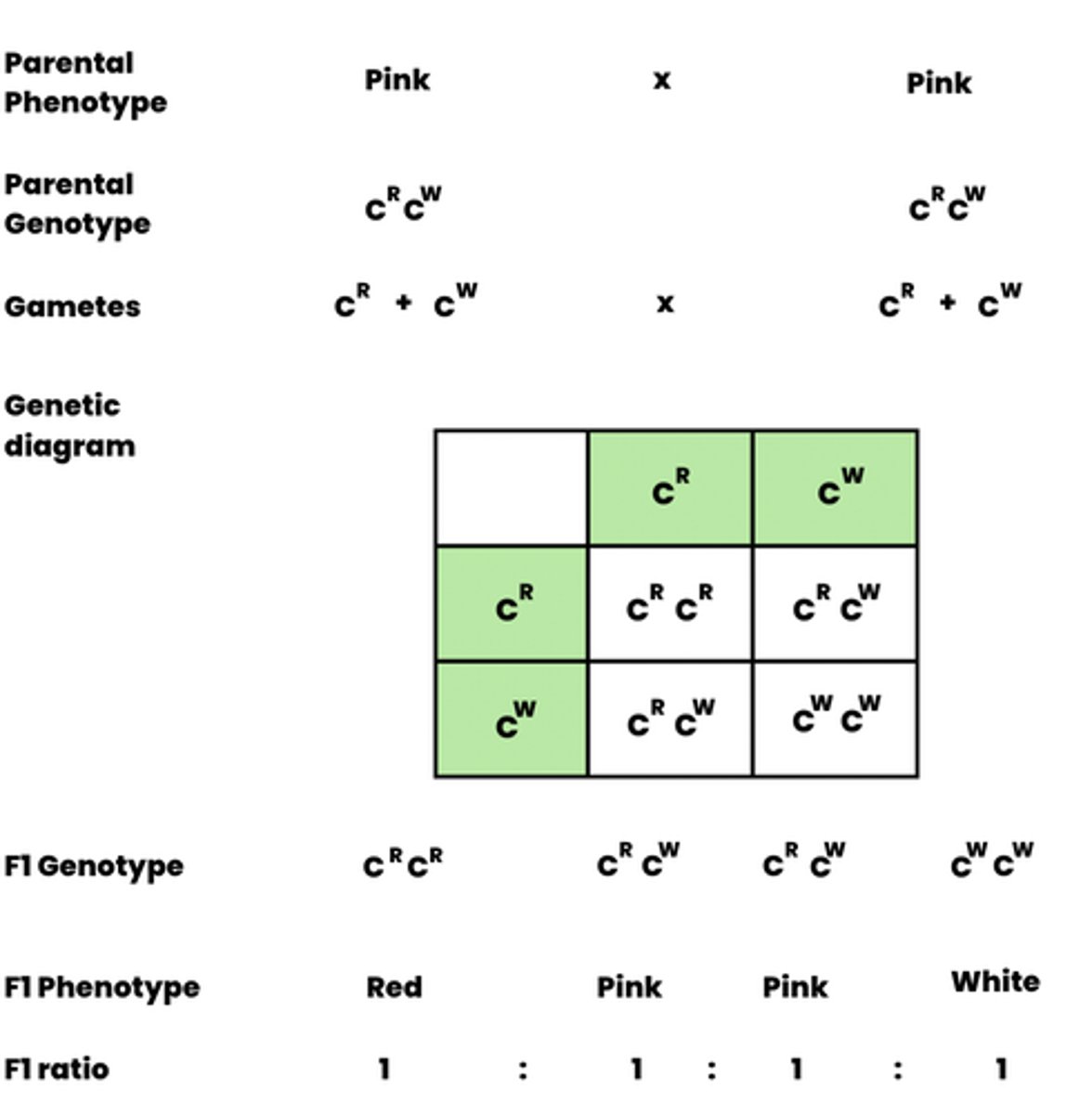
Ali, a genetic counsellor is investigating the cross between heterozygous blood group A and heterozygous blood group B parents.
Show the results in a genetic diagram with the F1 ratios
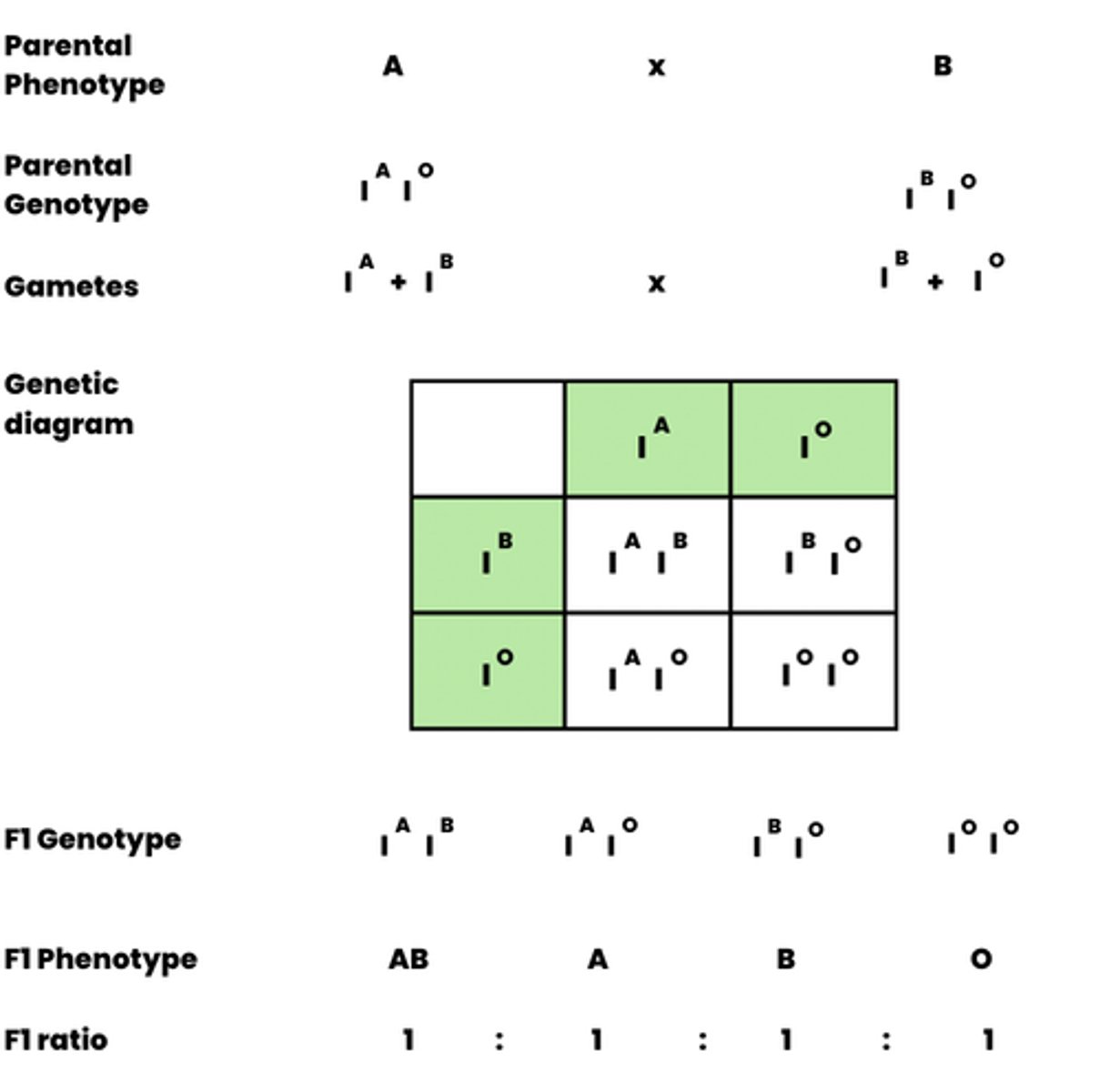
Emily is a carrier of the allele for haemophilia, a recessive condition that is carried on the X chromosome. She would like to see the genetic cross before she decides to have children with her 'normal' partner
Show the results of her cross in a genetic diagram with the F1 ratios
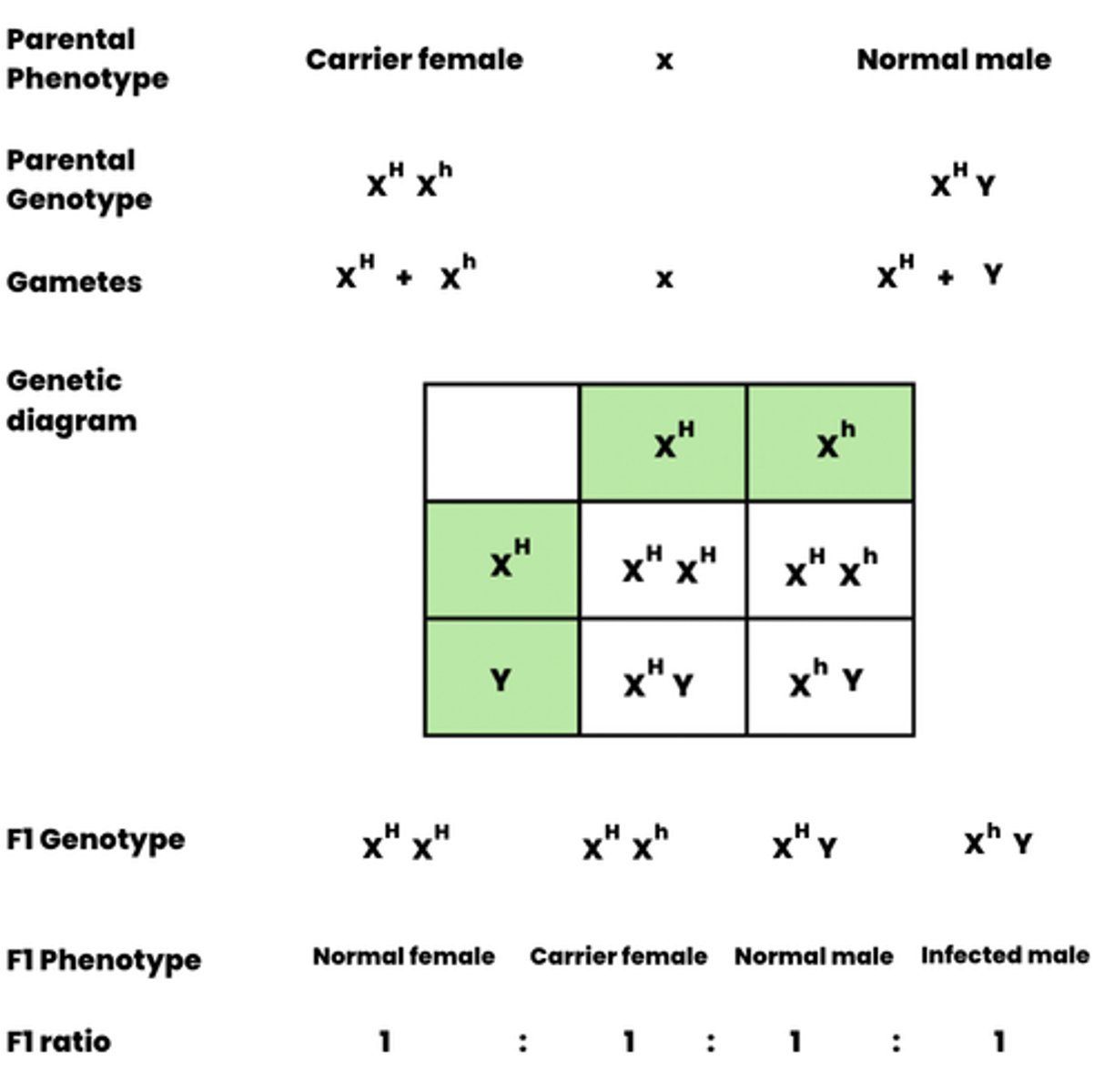
A farmer decided to cross two plants who's both produce round and yellow seeds (heterozygous) . The allele for round seeds, R is dominant to the allele for wrinkled seeds, r and the allele for yellow seeds, Y is dominant to the allele for green seeds, y.
Show the genetic cross between these two plants as well as their F1 ratios
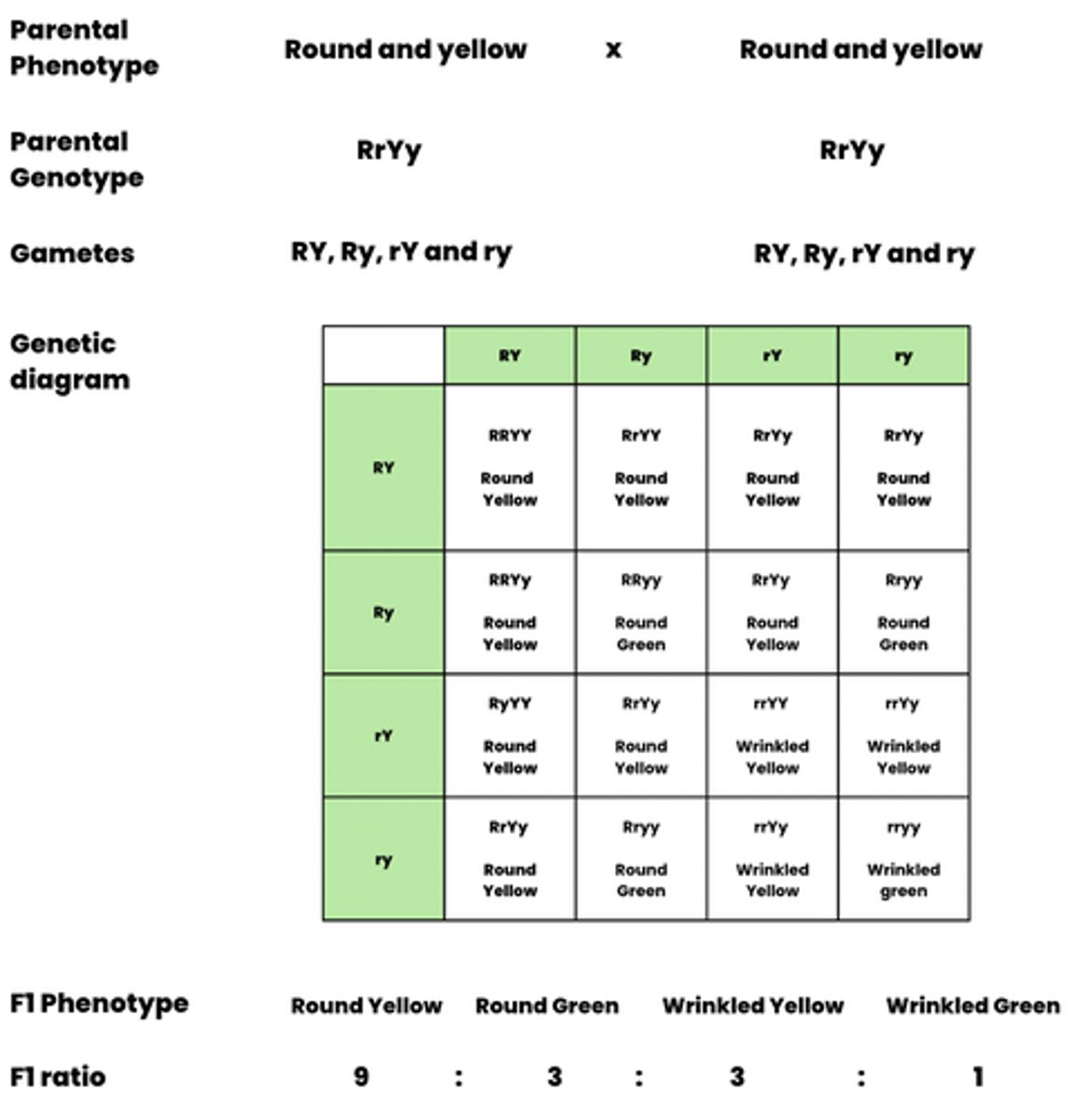
Where are autosomal linked genes located? (2)
- Present on the same chromosome at different loci
- Rather than on separate chromosomes (as previously considered in dihybrid inheritance)
How many potential gamete combinations result from autosomal linked genes? (2)
- Result in two potential gamete combinations
- Rather than four (as previously considered in dihybrid inheritance)
What type of cross pattern should be used for autosomal linked genes? (1)
Monohybrid pattern rather than a dihybrid pattern
(What this means is that when approaching questions related to autosomal linked genes, you should treat the question as if you were asked about a monohybrid pattern (4 box punnet square) rather than a dihybrid inheritance (16 box punnet square)
What is an example of gamete production with autosomal linked genes? (3)
- If genes A and B, and a and b are linked
- The gametes each parent produces are AB and ab (linked together)
- Rather than AB, Ab, aB, and ab (not linked).
What is epistasis? (2)
- Occurs when two or more genes interact
- To contribute to a phenotype
Where does epistasis often occur? (3)
- In metabolic pathways
- That are controlled by enzymes
- Coded for by different genes
How does enzyme dependency affect metabolic pathways in the context of epistasis? (2)
- Each enzyme is dependent on the previous enzyme for its substrate
- If any one of these enzymes is non-functional, the pathway comes to a halt
Draw a table that shows the most common exam questions that related to pedigree diagrams (8)
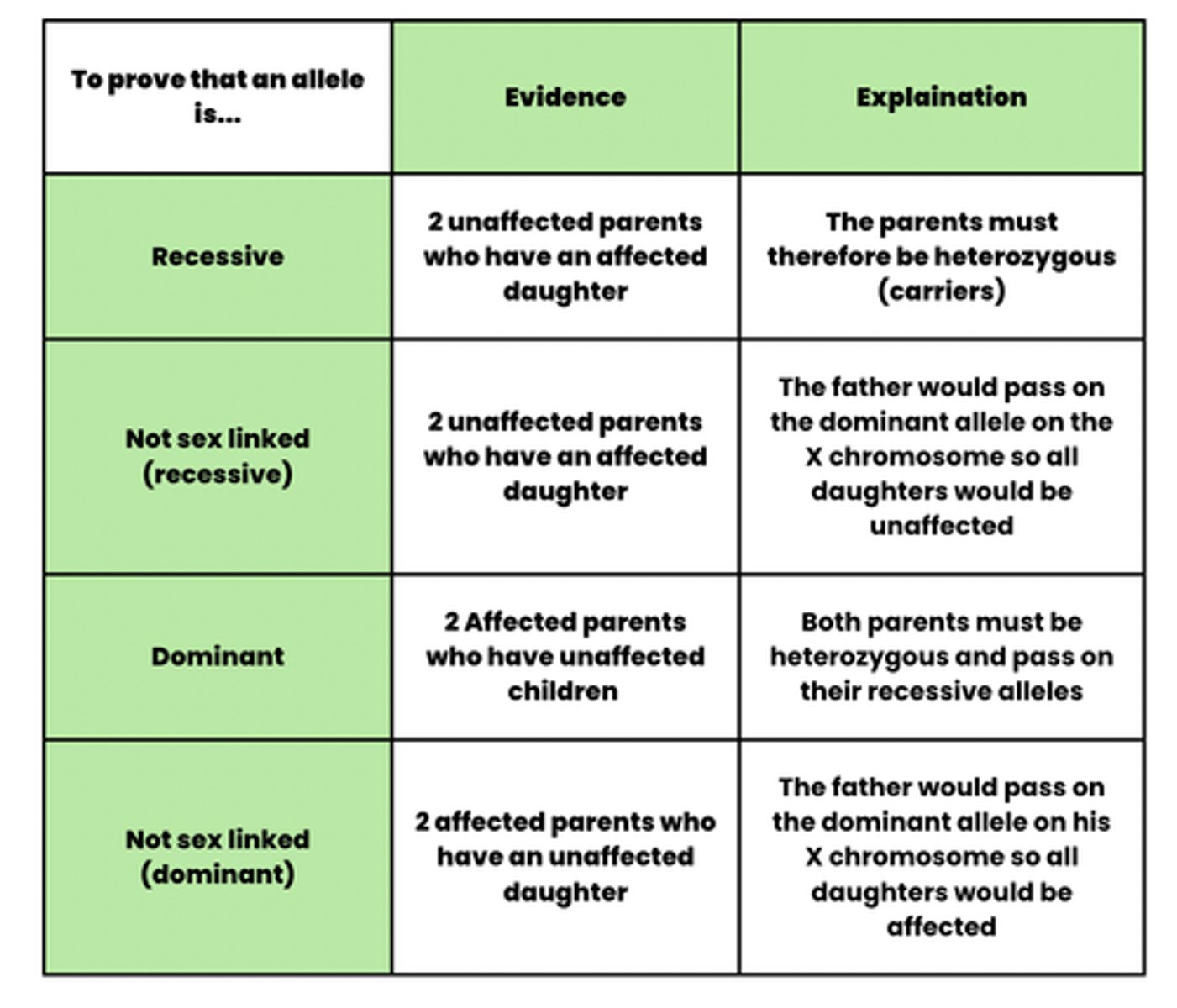
How would you carry out a chi-squared test? (4)
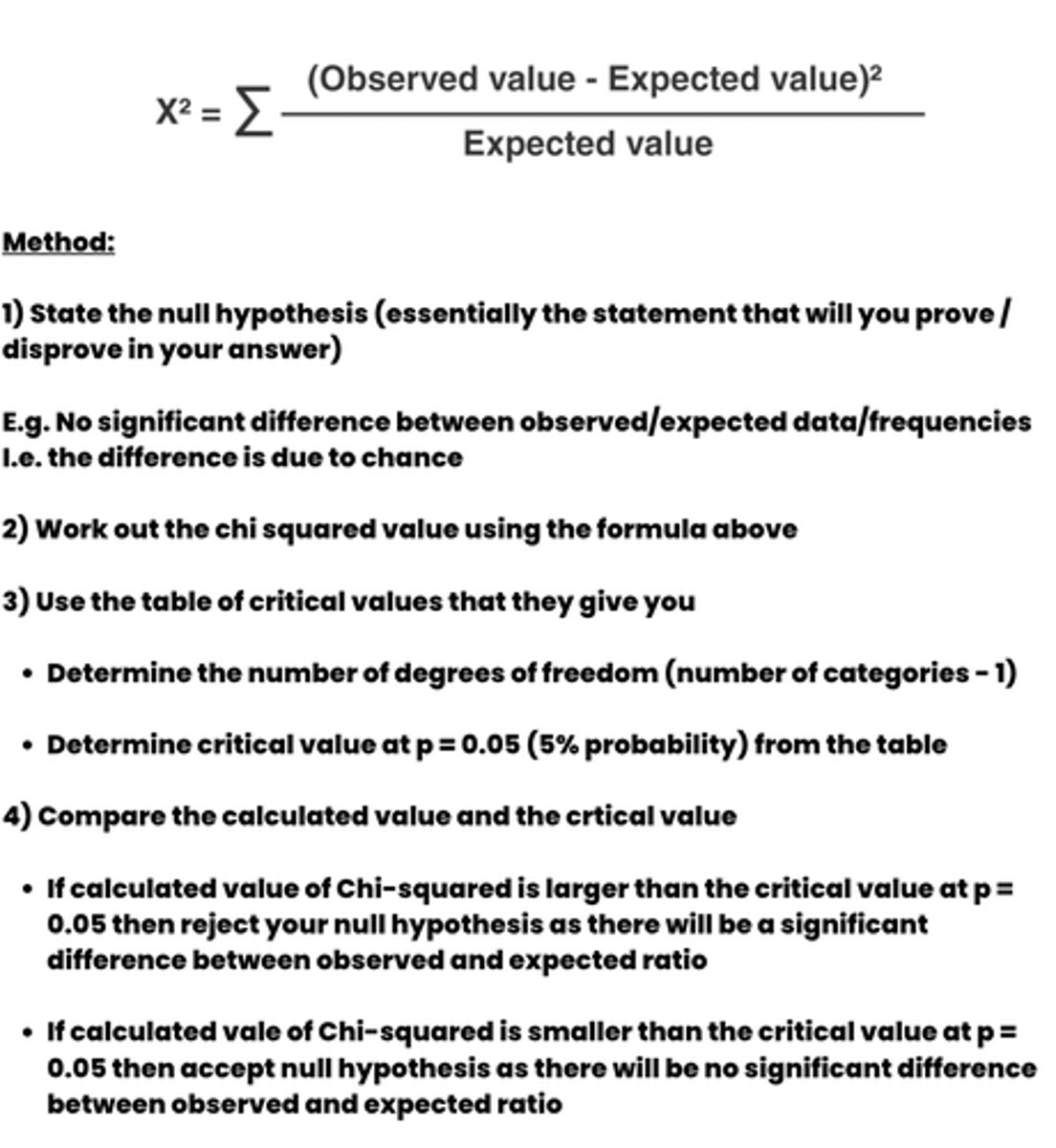
Why do we use the chi squared test? (2)
- To compare the 'goodness of fit' of observed phenotypic ratios with expected ratios
- It is used to determine if there is a statistical difference between the expected and observed ratios from the results of a genetic cross